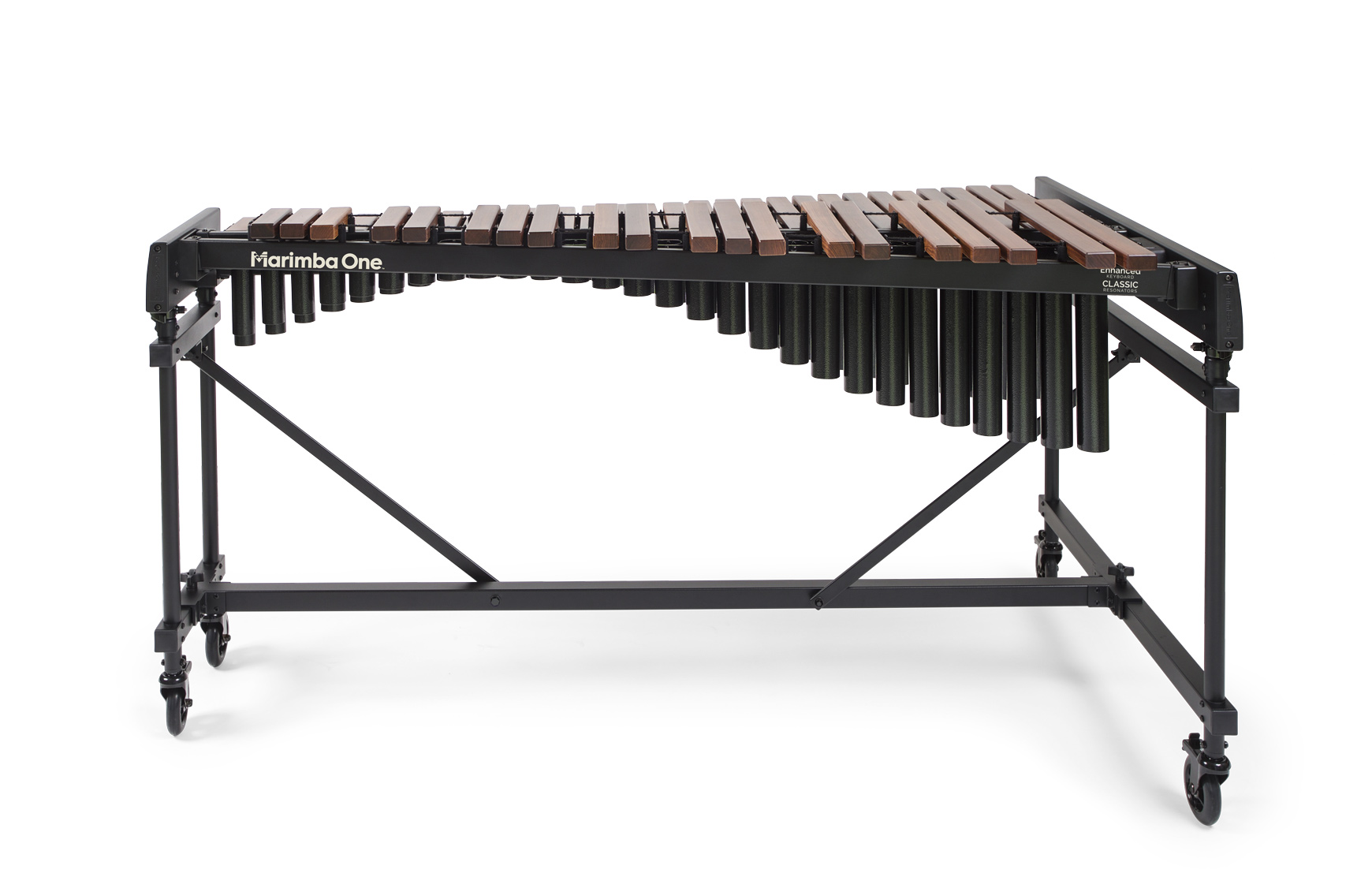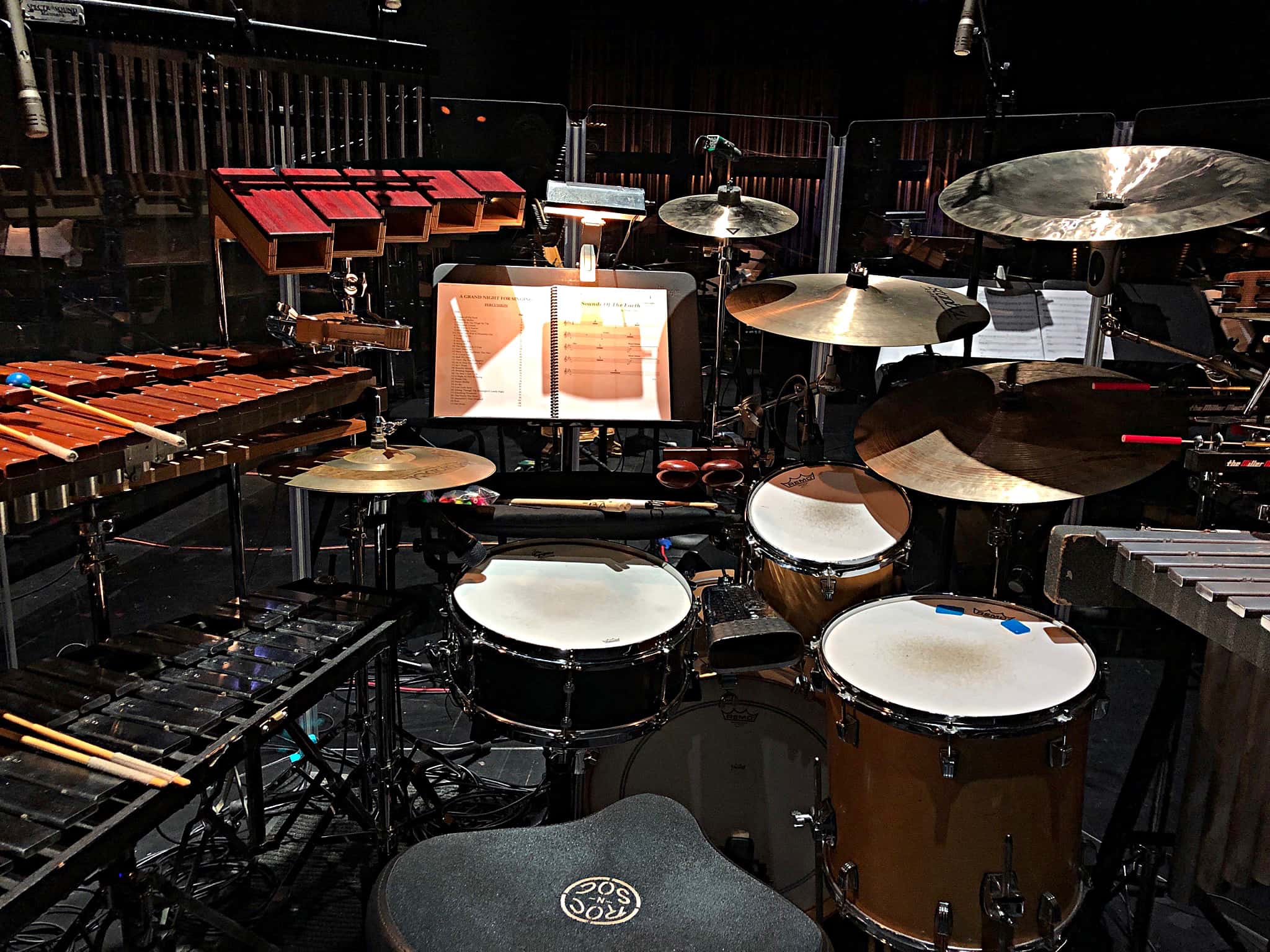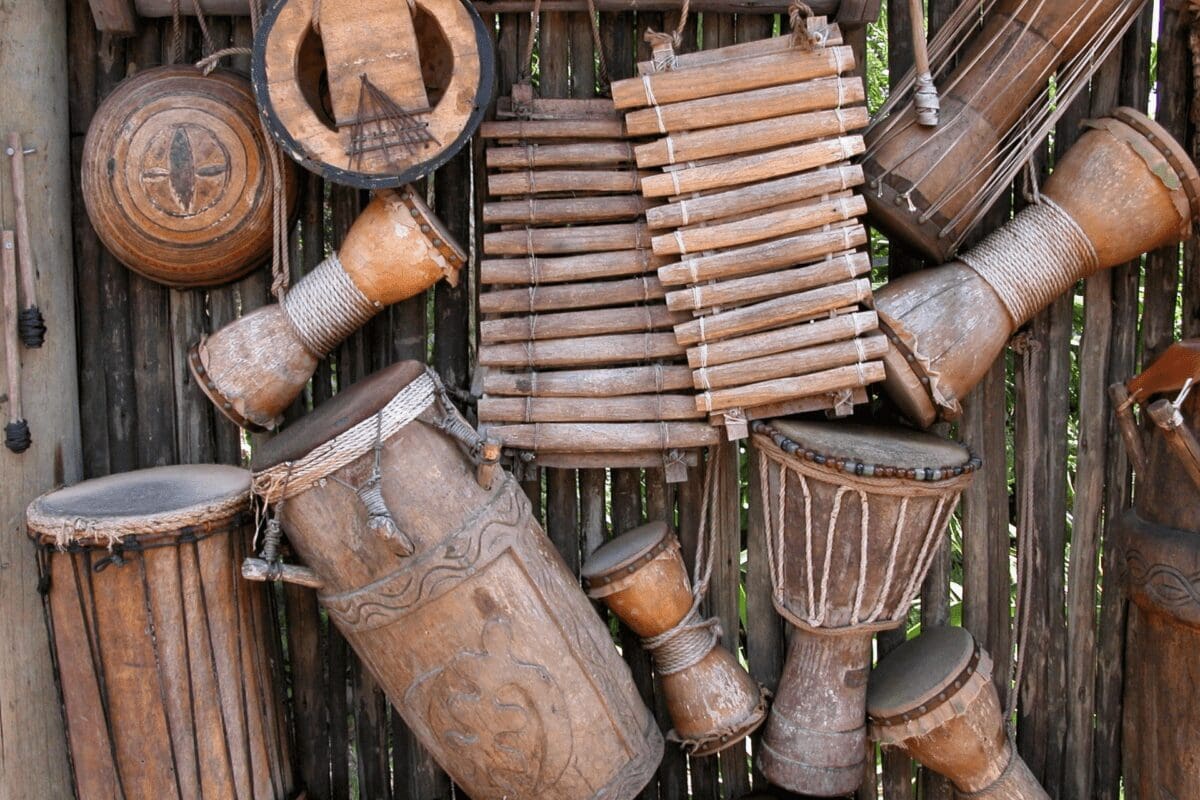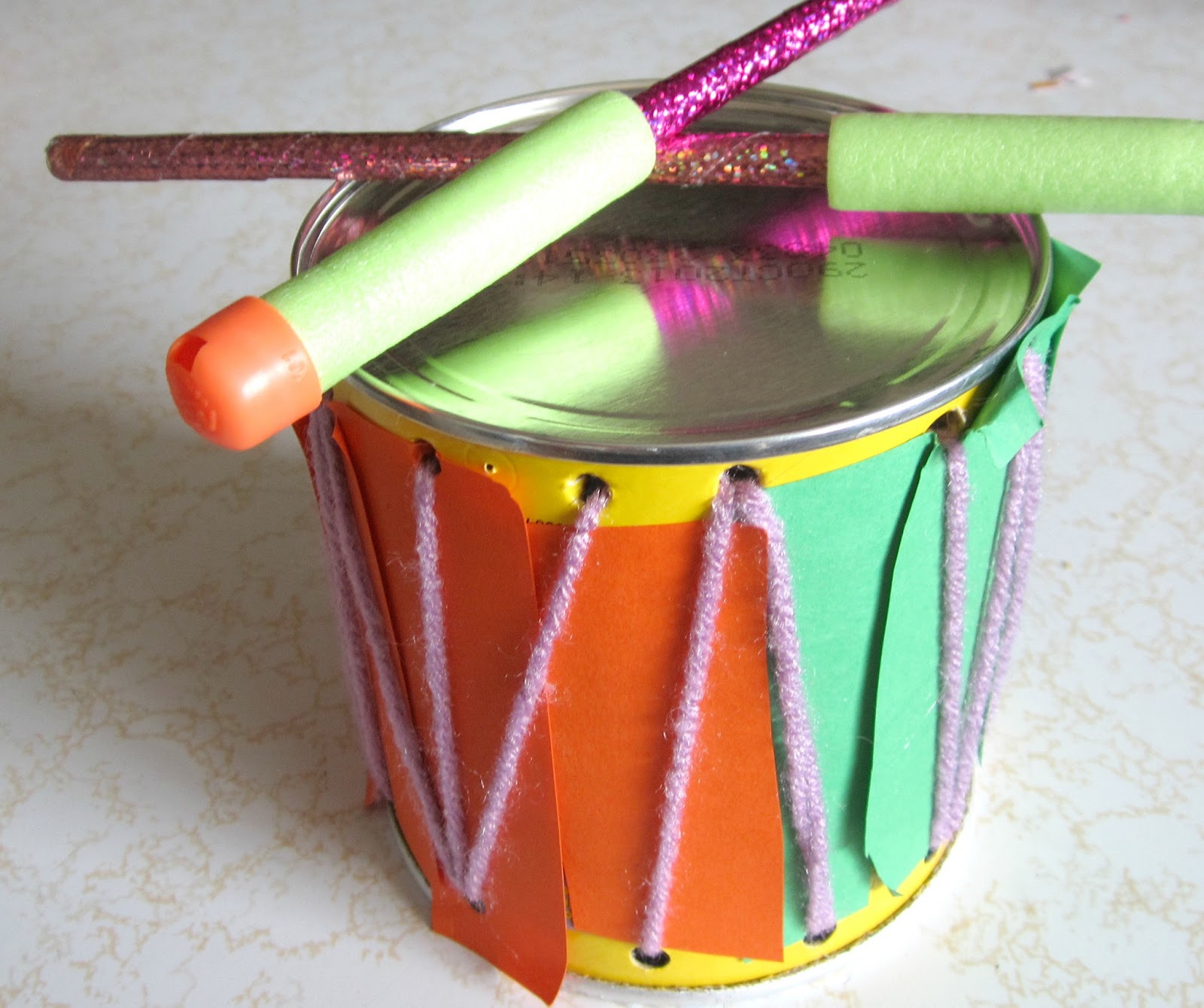Home>Instruments>Percussion Instruments>What Are The Percussion Instruments In A Marching Band
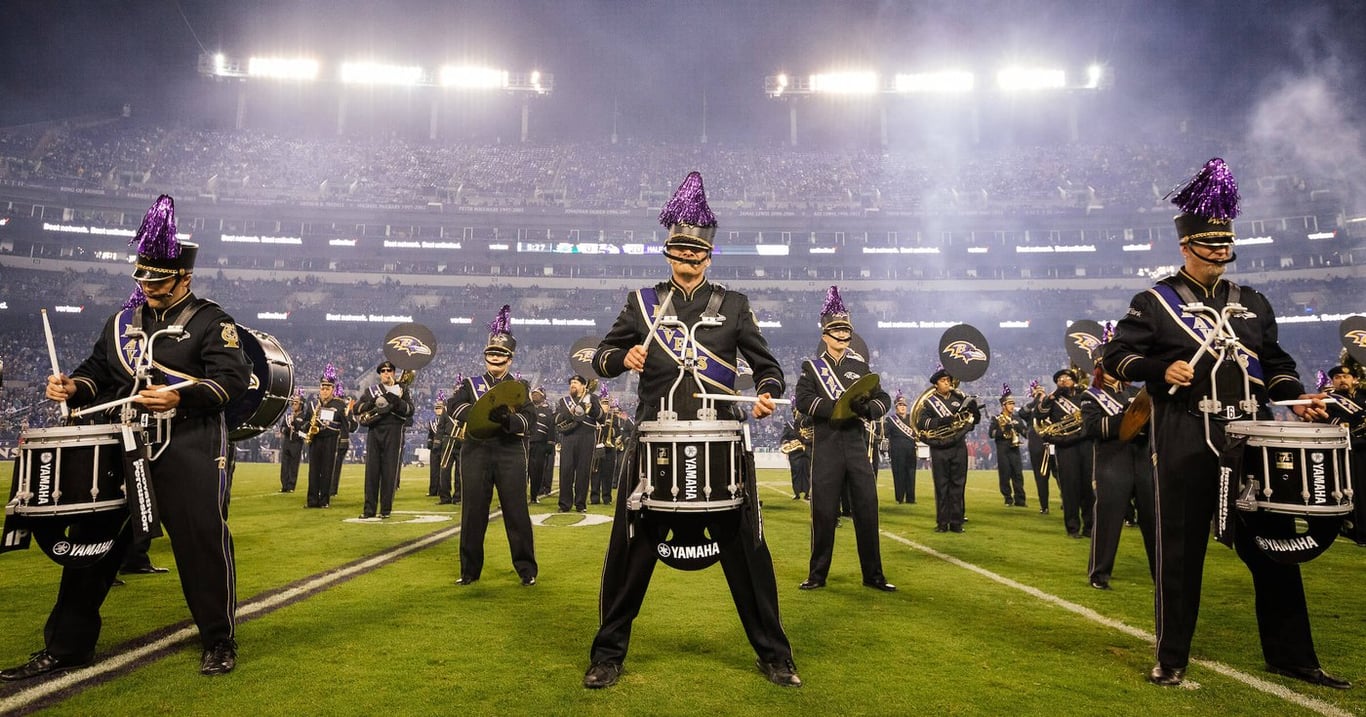

Percussion Instruments
What Are The Percussion Instruments In A Marching Band
Published: January 16, 2024
Discover the diverse range of percussion instruments used in a marching band, including drums, cymbals, and xylophones, and learn how they create the rhythm that drives the music.
(Many of the links in this article redirect to a specific reviewed product. Your purchase of these products through affiliate links helps to generate commission for AudioLover.com, at no extra cost. Learn more)
Table of Contents
Introduction
When it comes to creating rhythm and adding excitement to any musical performance, percussion instruments play a critical role. In the world of marching bands, these instruments take center stage, providing the driving beat that propels the band forward and captivates audiences. From the thunderous bass drum to the delicate chimes of the glockenspiel, percussion instruments bring a unique flair and energy to the marching band experience.
In this article, we will explore the various percussion instruments found in a marching band. Each instrument has its own distinct sound and purpose, contributing to the overall sonic tapestry that defines the band’s performance. Whether it’s the sharp cracks of the snare drum or the deep rumble of the bass drum, each instrument serves a vital role in creating a cohesive and dynamic musical performance.
Join us as we delve into the fascinating world of marching band percussion, exploring the different instruments and the techniques required to play them. We will discover the diversity and versatility of these instruments, from the melodic tones of the xylophone to the booming power of the timpani. By the end of this article, you will have a greater appreciation for the intricate art of percussion in a marching band setting.
Snare Drum
The snare drum is perhaps the most iconic and recognizable instrument in a marching band. Its sharp, crisp sound serves as the backbone of the percussion section, providing a consistent rhythm that drives the band’s performance.
The snare drum is a shallow drum made of metal or wood, usually with a head made of a tightly-stretched synthetic material like Kevlar. It produces sound when struck with drumsticks, known as drummers’ beating, or when the head is struck by a wire or synthetic snares stretched across the bottom of the drum. These snares give the snare drum its distinct rattling sound.
In a marching band, snare drummers typically play in a line formation called a “drumline.” They march in unison while playing intricate patterns, known as rudiments, which include rolls, flams, and paradiddles. Snare drummers provide the driving pulse and accentuate key moments in the music, adding intensity and energy to the overall performance.
Mastering the snare drum requires excellent stick control, hand coordination, and precision timing. Snare drummers must be able to execute complex rhythms and accents while maintaining a steady tempo. They also need to have a strong sense of dynamics to bring out the subtleties of the music.
With its distinctive sound and prominent role in the marching band, the snare drum is a captivating instrument that commands attention. Its sharp and lively beats create the foundation on which the entire band builds their performance, making it an essential component of any marching band ensemble.
Bass Drum
The bass drum is a percussion instrument that adds depth and power to the rhythm section of a marching band. As the largest instrument in the drumline, it produces a deep and resonant sound that carries throughout the ensemble.
The bass drum consists of a large drumhead suspended vertically on a frame or carried on a strap, allowing it to be played while marching. It is usually played with a mallet or a felt beater, which strikes the drumhead to create the booming sound it is known for.
In a marching band, the bass drum provides the strong foundation and pulse that drives the music forward. It often plays the downbeats and emphasizes the rhythmic accents, serving as the backbone of the overall sound. The bass drum’s deep tones can be heard from afar, adding a sense of power and intensity to the band’s performance.
Playing the bass drum requires physical strength and control. Drummers must have a solid understanding of rhythm and timing to maintain a steady beat. They also need to have a good sense of dynamics to vary the volume and create the desired impact in different sections of the music.
It is not uncommon to see multiple bass drums of different sizes in a marching band. This allows for a wider range of pitches and tones, adding depth and complexity to the overall sound. Drummers in the bass section work together to create a cohesive and impactful rhythm, adding depth and power to the band’s performance.
The bass drum is a formidable instrument that commands attention and sets the tone for the entire marching band. Its deep, resonant sound adds a sense of grandeur and intensity, making it an essential component of any marching band ensemble.
Cymbals
Cymbals are a vital component of the percussion section in a marching band, providing accents, crashes, and shimmering tones that add excitement and texture to the music. They are circular metal plates that vibrate when struck together or with a drumstick, producing a variety of sounds depending on the technique used.
In a marching band, cymbals are typically played by a group of performers known as cymbal players or “cymbal line.” They hold pairs of cymbals in their hands, with each hand gripping the leather straps attached to the cymbals. Cymbal players use different techniques to create various effects, including crashes, swirls, and rolls.
Crashing the cymbals involves striking them together forcefully, producing a loud and explosive sound. This is often used to accentuate climactic moments in the music or to mark transitions between sections. Swirling the cymbals involves rubbing them against each other in a circular motion, creating a sustained and shimmering sound that adds a unique texture to the music.
Playing cymbals requires precise coordination and timing, as well as an understanding of dynamics. Cymbal players need to be able to execute their strikes and techniques with precision, ensuring that they seamlessly blend with the rest of the ensemble. They also need to have a good sense of musicality and be able to follow the conductor’s cues to create a cohesive and synchronized sound.
Cymbals are versatile instruments that can be used in a wide range of musical styles and genres. They bring a sense of drama, impact, and sparkle to the marching band’s performance, elevating the overall sound and adding a touch of brilliance.
Whether crashing together in a thunderous climax or shimmering softly in a delicate passage, cymbals play a vital role in creating a dynamic and captivating musical experience in a marching band.
Tenor Drums
Tenor drums, also known as quads or multi-toms, are a set of drums that are played simultaneously by a single drummer in a marching band. They are named for the number of drums in the set, typically ranging from four to six drums arranged horizontally.
Tenor drums provide a wide range of pitches, allowing the drummer to play melodic and rhythmic patterns that add complexity and depth to the music. Each drum is tuned to a specific pitch, creating a melodic sequence when played together.
The drummer carries the tenor drums using a harness system, allowing for mobility and ease of movement while marching. The player strikes the drums either with mallets or with the hands, producing crisp and articulate tones.
In a marching band, tenor drummers play intricate rhythms, fills, and accents that complement the rest of the percussion section. They often work in collaboration with the snare drummers, creating intricate and syncopated patterns that add excitement and complexity to the overall sound.
Mastering the art of playing tenor drums requires exceptional coordination, dexterity, and stamina. The drummer must be able to play different rhythms on each drum while maintaining a consistent tempo and fluid motion. They must also have a deep understanding of musicality and dynamics to bring out the nuances of the music.
Tenor drums are a visual and auditory spectacle in a marching band, adding visually captivating movement and a wide range of pitches to the ensemble. With their melodic and rhythmic possibilities, tenor drums contribute to the overall musicality and excitement of the band’s performance.
Marching Glockenspiel
The marching glockenspiel, also known as the bell lyra or orchestra bells, is a melodic percussion instrument that adds a bright and sparkling sound to the marching band. It consists of a series of metal bars tuned to specific pitches and mounted on a frame. The bars are struck with mallets to produce distinct and resonant tones.
Unlike the stationary orchestral counterpart, the marching glockenspiel is designed for mobility. It is often mounted on a lyre or carried by a harness, allowing the musician to play while marching or performing choreographed movements with the band.
The marching glockenspiel is known for its ability to cut through the ensemble’s sound with its clear and piercing tone. It is typically used to play melodic lines, solos, and countermelodies that complement the other instruments in the marching band.
Playing the marching glockenspiel requires precise technique and finger control. Musicians must be able to strike the bars accurately to produce the desired pitch and tone. They also need to have a good understanding of music notation and be able to read sheet music to perform their parts effectively.
In a marching band, the marching glockenspiel often plays an important role in adding color and texture to the overall sound. Its bright and vibrant tones can be heard above the rest of the ensemble, creating a captivating layer that enhances the musical experience.
The marching glockenspiel is a visually striking instrument that adds a touch of elegance and sparkle to the marching band. Its melodic capabilities and distinctive sound bring a unique element to the ensemble, making it an essential part of any marching band’s percussion section.
Xylophone
The xylophone is a melodic percussion instrument that adds a vibrant and resonant sound to the marching band. It consists of a set of wooden bars of varying lengths that are tuned to specific pitches. The bars are struck with mallets to produce distinct and rich tones.
In a marching band setting, the xylophone is typically mounted on a frame or carried using a harness. This allows the musician to play while marching or performing choreographed movements with the rest of the band.
The xylophone’s bright and percussive sound adds a melodic element to the marching band’s repertoire. It is often used to play catchy and memorable melodies that help define the character and mood of the music being performed.
Mastery of the xylophone requires precision and dexterity. Musicians must be able to strike the bars with the right amount of force and accuracy to produce the desired pitch and tone. They also need to have a good understanding of music theory and be able to read sheet music to perform their parts effectively.
The xylophone’s versatility allows it to play a wide range of musical styles, from lively and upbeat tunes to delicate and expressive melodies. Its presence in the marching band brings a distinct and captivating element to the overall sound, elevating the musical experience for both performers and audiences.
Visually, the xylophone is a stunning instrument that adds a touch of elegance and sophistication to the marching band. The combination of its melodic capabilities and bright sound make it a valuable addition to the percussion section, enhancing the band’s overall musicality and performance.
Marimba
The marimba is a large and melodically versatile percussion instrument that adds a warm and resonant sound to the marching band. It consists of wooden bars of different lengths that are arranged similarly to a piano keyboard. When struck with mallets, the bars produce diverse and harmonically rich tones.
Incorporating a marimba into a marching band can be a visually stunning and musically captivating choice. Due to its size and weight, the marimba is often played by multiple performers who carry the instrument while marching or stationary.
The marimba’s unique sound adds depth and complexity to the band’s music. It is known for its ability to create captivating melodies, harmonies, and intricate rhythmic patterns. Its warm and resonant tones make it an ideal instrument for conveying both gentle and powerful emotions in a marching band setting.
Playing the marimba requires exceptional skill, as musicians must have precise control over their mallet technique, timing, and dynamics. They must be able to navigate the instrument’s wide range effectively and execute complex musical passages with accuracy.
The marimba’s versatility allows it to perform a wide variety of musical styles, from classical to contemporary. Its rich tones make it well-suited for solos, duets, or ensemble playing, and it adds a distinct voice to the overall sound of the marching band.
Visually, the marimba adds an element of elegance and sophistication to the marching band. Its resonant sound and intricate musicality make it a standout instrument that captivates both performers and audiences alike.
By incorporating the marimba into their repertoire, a marching band can create a unique and memorable musical experience that showcases the instrument’s versatility and adds a layer of richness to their performances.
Vibraphone
The vibraphone is a melodic percussion instrument known for its distinctive and ethereal sound. It adds a shimmering and atmospheric quality to the music of a marching band. The instrument consists of metal bars tuned to specific pitches, which are struck with mallets to produce resonant and vibrating tones.
In a marching band, the vibraphone is often mounted on a frame or carried using a harness, allowing the musician to play the instrument while marching or performing choreographed movements with the rest of the band.
The vibraphone’s unique sound is created using motor-driven rotating discs beneath each bar. This creates a vibrato effect that gives the instrument its characteristic shimmer and adds a layer of depth and expression to the music.
Playing the vibraphone requires a high level of technical skill and musical sensitivity. Musicians must have precise mallet control and a keen understanding of dynamics and phrasing to bring out the full potential of the instrument. They must also be able to interpret and convey the desired emotions and nuances of the music.
The vibraphone’s versatility allows it to perform a wide range of musical styles, from ballads to up-tempo pieces. Its mellow and enchanting tones make it ideal for playing lyrical melodies or creating dreamy atmospheres in the marching band’s repertoire.
Visually, the vibraphone adds an element of elegance and sophistication to the marching band. Its gleaming metal bars, coupled with its mesmerizing and distinct sound, make it a captivating instrument to watch and listen to during a performance.
With its unique sound and captivating visual presence, the vibraphone enriches the musical palette of a marching band. Its ability to create a magical and enchanting ambiance adds depth and complexity to the band’s performance, leaving a lasting impression on both performers and audiences alike.
Timpani
The timpani, also known as kettle drums, are a vital component of the percussion section in a marching band. These large, bowl-shaped drums produce deep and resonant tones and add a sense of power and grandeur to the ensemble’s sound.
Traditionally, timpani drums consist of a set of drums with varying sizes, each tuned to a specific pitch. The drum heads are made of a tightly stretched synthetic material or animal skin, which is struck with drumsticks to produce the desired pitch and tonality.
In a marching band, the timpani player is responsible for maintaining a steady rhythm and providing accents and dynamics at key moments in the music. They must have a keen sense of timing and be able to execute precise and commanding strikes on the drums.
Playing the timpani requires strong technique and a deep understanding of musicality. The player must be skilled in tuning the drums to the correct pitch and adjusting the tension of the drum heads to achieve the desired sound. The timpani player’s rhythmical precision and ability to control the dynamics of the drums greatly impact the overall sound and impact of the marching band’s performance.
The timpani drums are often positioned near the rear of the percussion section in a marching band, adding a sense of depth and foundation to the overall sound. Their booming and resonant tones can be heard from a distance, creating a powerful and commanding presence.
Visually, the timpani drums are impressive instruments. Their large size and distinctive shape make them a focal point of the percussion section during performances.
The timpani’s rich and majestic sound enhances the grandeur and intensity of a marching band’s repertoire. Whether playing rhythmic patterns or accentuating dramatic moments, the timpani drums contribute to the overall impact and excitement of the ensemble’s performance.
Auxiliary Percussion Instruments
In addition to the main percussion instruments, marching bands also utilize a variety of auxiliary percussion instruments to add depth, texture, and unique sounds to their performances. These instruments play a crucial role in enhancing the overall musical experience and creating a diverse sonic landscape. Here are some commonly used auxiliary percussion instruments:
- Tambourine: The tambourine is a handheld instrument with small metal jingles or cymbals attached to a circular frame. It is shaken, struck, or tapped to produce a jingling sound. The tambourine adds a vibrant and rhythmic element to the music.
- Woodblock: The woodblock is a percussion instrument made of a hollow wooden block that is struck with a mallet. It produces a resonant, resonant “click” sound and is often used to create accents and rhythmic patterns.
- Claves: Claves are a pair of wooden sticks that are struck together to produce a sharp and resonant sound. They add a distinctive Latin flavor to the music and are often used in jazz, salsa, and other genres.
- Triangle: The triangle is a small, metal instrument shaped like a triangle. It is suspended from a string and struck with a metal beater. The triangle adds a shimmering and high-pitched sound that adds a touch of sparkle to the music.
- Cowbell: The cowbell is a metal bell with a clapper inside. It produces a bright and percussive sound when struck with a drumstick. Cowbells add accents and rhythmic patterns, commonly associated with Latin and Afro-Cuban music.
- Shaker: Shakers come in various forms, such as maracas or egg shakers. They are small handheld instruments filled with beads or seeds that create a rattling sound when shaken. Shakers provide rhythmic accompaniment and add a subtle texture to the music.
These auxiliary percussion instruments, along with many others, offer marching bands the opportunity to explore a wide range of musical styles and add depth and excitement to their performances. Each instrument contributes its unique timbre and character, creating a vibrant and dynamic ensemble sound.
Whether it’s the jingle of the tambourine, the sharp click of the woodblock, or the shimmering tones of the triangle, auxiliary percussion instruments play a crucial role in enhancing the overall musical experience in a marching band.
Conclusion
Percussion instruments form the vibrant heartbeat of a marching band, adding rhythm, texture, and excitement to every performance. From the thunderous rolls of the snare drum to the resonant tones of the bass drum, from the shimmering sounds of the cymbals to the melodic richness of the marimba, each instrument plays a crucial role in creating a dynamic and captivating musical experience.
The snare drum provides the driving pulse and intricate rhythms, while the bass drum adds power and depth to the ensemble’s sound. The cymbals bring bright accents and crashes, while the tenor drums create melodic patterns and complex rhythms. The marching glockenspiel and xylophone contribute enchanting and melodic layers, while the vibraphone adds a shimmering and ethereal quality. The timpani resound with grandeur and majesty, and the auxiliary percussion instruments offer unique textures and flavors.
Each percussion instrument requires skill, precision, and musicality to master. Whether it’s the exacting technique of the snare drum or the nuanced control of the marimba, percussionists must possess a deep understanding of their instruments to deliver compelling performances.
Together, the percussion section in a marching band creates a symphony of rhythm, adding intensity, dynamics, and complexity to the ensemble’s sound. Their contributions are not only heard but also seen, as the visual movements and choreography of the percussionists enhance the overall visual spectacle of the performance.
In conclusion, percussion instruments are the backbone of a marching band, providing the driving force and musical depth that defines their sound. They bring energy, excitement, and a powerful presence to the ensemble, captivating audiences and enhancing the overall musical experience. Whether it’s the thunderous beats of the bass drum, the intricate rhythms of the snare drum, or the melodic interplay of the mallet percussion instruments, percussionists play a fundamental role in creating the dynamic and captivating performances that make marching bands memorable.






